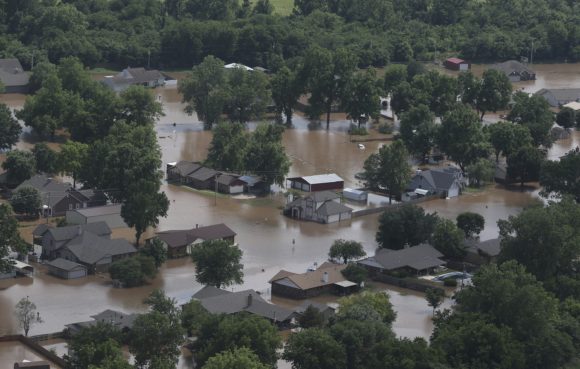The federal government has bought additional reinsurance to cover losses of the National Flood Insurance Program.
On Feb. 23, the Federal Emergency Management Agency (FEMA), which administers the flood insurance program, entered into the agency’s fourth, three-year reinsurance agreement with Hannover Re (Ireland). In turn, Hannover transferred $575 million of the program’s financial flood risk to investors of capital markets by sponsoring catastrophe bonds.
As part of the agreement, FEMA will pay $79.44 million in premiums for the first year of reinsurance coverage. Additionally, the agreement will cover 12.5% of losses for any single flood event with losses between $6 billion and $7 billion, and 22.5% if that same flood event has losses that rise to $7 billion to $9 billion.
“FEMA continues to view reinsurance as an integral tool in helping strengthen the fiscal structure of the NFIP,” said FEMA’s Deputy Associate Administrator for Insurance and Mitigation David Maurstad, the senior executive in charge of the NFIP.
Combined with the previous three capital market placements in 2018, 2019 and 2020, and a January 2021 traditional reinsurance placement, FEMA has transferred $2.928 billion of the program’s flood risk to the private sector ahead of the 2021 hurricane season, with $500 million in coverage expiring in August 2021.
Risk Rating 2.0
On another NFIP issue, officials declined to confirm a report by Politico Pro that upcoming rate increases for flood insurance will not only be delayed but also be phased-in, with the higher rates for new policies starting on Oct. 1 but new rates for existing policies being delayed until the following April.
FEMA is working to change the pricing of flood risk to more accurately reflect the risk through the forthcoming “Risk Rating 2.0” initiative.
That risk-based pricing has been delayed. FEMA had initially announced that new rates for all single-family homes would go into effect nationwide on Oct. 1, 2020, but decided it needed additional time to broaden its analyses of the proposed rating structure so FEMA delayed implementation of Risk Rating 2.0 by one year to October 1, 2021.
That FEMA extension means all NFIP policies could change over to the new rating system at one time unless a phased approach is implemented.
Asked if a decision has been made to implement a phased-in approach for new and existing policies as reported by Politico Pro, NFIP’s Maurstad said a final decision has not been made.
“FEMA currently is finalizing its planned release of Risk Rating 2.0,” he replied to Insurance Journal. He said specifics will be announced when the process is complete.
New research by First Street Foundation, a nonprofit research and technology group working on flood risk, indicates that current NFIP rates are inadequate to cover current risks and that flood risks are growing.
If the nearly 4.3 million residential homes (1-4 units) across the country with substantial flood risk were to be insured through the NFIP, the NFIP rates would need to increase 4.5 times to cover the risk today, the research found.
These estimates suggest the NFIP, which has lost more than $36 billion since its inception, will face growing losses in the years ahead without changes.
Was this article valuable?
Here are more articles you may enjoy.



 2 New Jersey Pilots Killed in Helicopter Collision Frequented Nearby Cafe Together
2 New Jersey Pilots Killed in Helicopter Collision Frequented Nearby Cafe Together  CRC Group Signs Agreement to Acquire Euclid Transactional
CRC Group Signs Agreement to Acquire Euclid Transactional  FBI Involved After Two Florida Injury Lawyers Go Missing From Fishing Trip
FBI Involved After Two Florida Injury Lawyers Go Missing From Fishing Trip  Severity Was Up, But Will Falling Claims Volume Impact the Profession?
Severity Was Up, But Will Falling Claims Volume Impact the Profession? 

